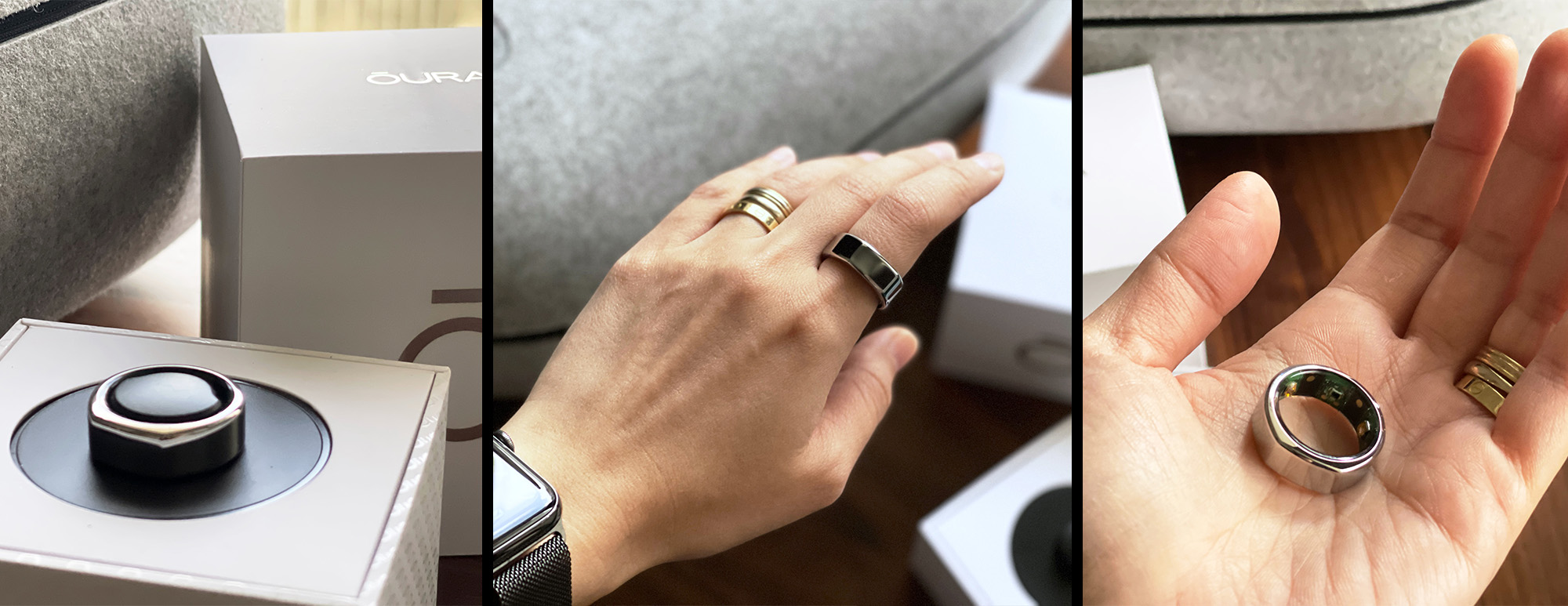The Oura Ring is a wearable fitness, health and sleep tracker that also measures temperature (with changes as small as 0.1°C), but unlike standard fitness and smart watches and bracelets, it’s in the shape of a ring. There are reports that it detected the onset of fever — a known symptom of COVID — and did so around three days before actual physical symptoms showed. There are current studies being done on the effectiveness and accuracy of this feature, but at the moment, the Oura Ring is in no way a medical device and should not be relied on as such. But it certainly is good and suitable for general health tracking; the NBA and WNBA purchased custom-fitted Oura Rings for thousands of their athletes, as did NASCAR for their drivers and employees. Prince Harry also wears one, as does Jack Dorsey, Twitter’s CEO.
You’re probably thinking it’s expensive — and you’re not wrong. There are four finishes and the cheapest ones will set you back USD299 + USD15 to ship to Singapore from Finland on Oura Ring’s official website. This comes with a free sizing kit, a 30-day return period and 2-year warranty.
But of course you’re paying for the technology behind this wearable. The sensors track the following: During the day — activity levels, calories, steps, inactive times and naps. During sleep — resting heart rate, heart rate variability, respiratory rate, body temperature, light, deep and REM sleep, nighttime movement and sleeping timing and quality.
You also get a comprehensive analysis of all this data so you can make meaningful changes to your lifestyle habits. For example, when it comes to menstrual cycle tracking and birth control, the Oura Ring looks at patterns in body temperature, resting heart rate, heart rate variability, and respiratory rate. It takes this data, together with your own cycle tracking input, to predict your next period and when you’re least likely to get pregnant. It’s not foolproof, but close enough to be useful.
We got our hands on the Oura Ring for a review:
FIRST IMPRESSIONS

Above: The Oura Ring packaging.
The box is small, sleek and minimal, just like the ring itself. It sits on a black stand that is its charging base (it uses a USB-C port), and charging the ring was surprisingly fast; it took less than an hour to go from 20-100%.

Above: inside the box: The charging dock with a USB-C port, and a USB-C to USC-a cable.
I downloaded the app from the iOS store, registered an account, then linked my Apple Health app to the Oura Ring app. This was an easy and fast process and I was all set up within a minute.

Above: Screenshots from the iPhone app. Images taken from Oura Ring.
The ring design is universally-pleasing; the one I have is a shiny silver ring with a flat top and yes, goes with everything. The band is rather thick, but that’s because of the sensors; the first day of wearing the ring at home, I was very conscious of it and imagined it was uncomfortable — but just like my wedding band, it’s a matter of the finger getting used to the ring and forgetting that it’s there. By the next day, I didn’t “feel” it as much. The ring is made from titanium and is very light — definitely lighter than a conventional ring. It can be worn on any finger, but Oura says that the index, middle or ring fingers work best. The sensor bumps should be positioned underneath the finger, while the “flat” part of the ring faces up.
On a full charge, the battery lasted me six days. It is also water-resistant up to 100m so there was no need to remove it while washing hands, bathing or swimming. But as recommended by Oura, when it got wet, I removed it to dry before putting it back on again.

Above: The Oura Ring worn on my left index finger, with the flat top facing up.
Like all wearables, the more you wear it, the more data it can collect, and trends can be formed. After a week, I was familiar with my sleep patterns, my supposed “readiness” to start the day, and my general activity levels. But I have all this data and more from my Apple Watch, with the exception of fluctuations in body temperature, which Apple Watch doesn’t have a sensor for. Many activity trackers — like Fitbit — do have temperature sensors built-in, so if you own a Fitbit, you may not find a need for one in an Oura Ring. But here’s the main difference: it’s a ring. It really comes down to personal preference in an activity and sleep tracker. I don’t like to wear my Apple Watch to sleep, so I’ve been missing out on sleep metrics, which I’m grateful to the Oura Ring for; and I do appreciate knowing whether my body temperature is at optimal levels or not. I can imagine for individuals who prefer not to wear a tracker on their wrist for various reasons (for example, they love their G-SHOCKs or luxury timepieces), this would make a good and stylish option.

Above: The Oura Ring. 🖤
Back to everyone’s burning question: can the Oura Ring detect COVID? It certainly can’t tell you that you have the virus in you, but it can alert you to changes in your body that signify you’re coming down with something. And many times, this early information can save you from a whole lot of unnecessary suffering. There are ongoing studies being done on this matter, and at this point, the Oura Ring is looking very promising.
The Oura Ring is available on their website here. Priced at USD299 for silver and black, and USD399 for stealth and gold (limited edition).











You must be logged in to post a comment.